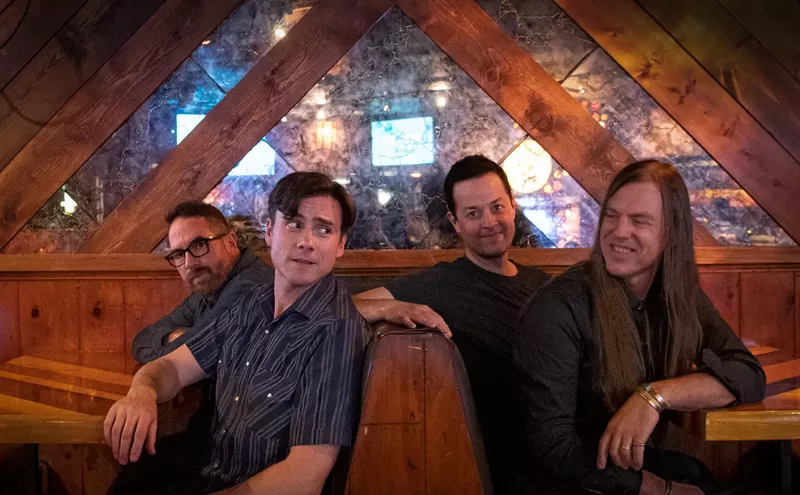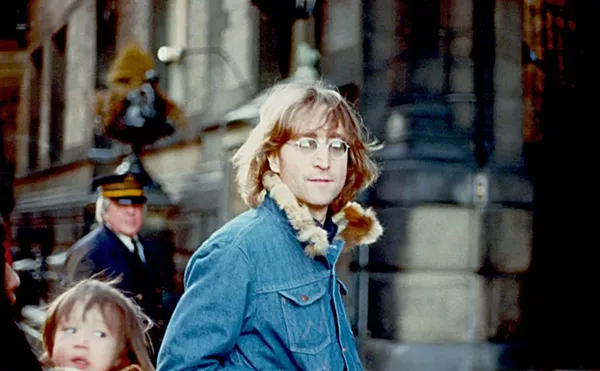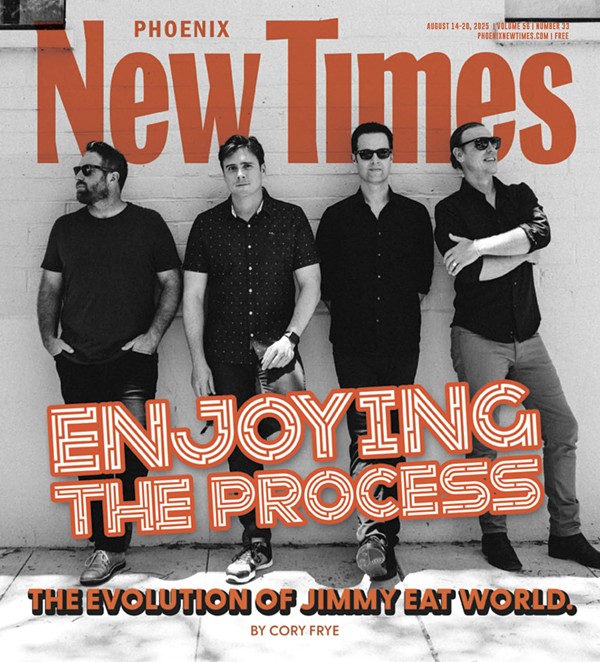(Editor's note: This article originally ran in 2017. We're bringing it back in honor of David Lynch, who died on Jan. 16, 2025, at the age of 78.)
"I’ll see you again in 25 years,” Laura Palmer says in the last episode of Twin Peaks.
The cult TV show ended in 1991, with a finale that ranks as one of the most uncompromising, avant-garde episodes that network TV ever aired. Over the course of two seasons, creators David Lynch and Mark Frost created a beguiling hybrid of soap opera, murder mystery and horror set in a Pacific Northwest town from which the show derives its name. Full of strange humor, offbeat characters, lush cinematography and moments of nightmarish dread, it was a one-of-a-kind program that helped pave the way for the “Golden Age” of television.
The show drew viewers in with a powerful story hook: Who killed Laura Palmer, the local It Girl?
Lynch and Frost have admitted that they originally planned to leave her murder unresolved, using it as the jumping-off point for exploring the town’s myriad mysteries. For a place that looks wholesome, "Twin Peaks" has enough extramarital affairs, drug deals and shadowy conspiracies to put most big cities to shame. It’s also home to an actively eerie supernatural population, including backward-talking dwarves, disappearing giants and denim jacket-clad demons who appear to either help or hinder FBI agent Dale Cooper’s investigation into the Palmer case.
After the show ended with almost a dozen unresolved plot lines and a prequel movie ("Twin Peaks: Fire Walk With Me") that raised even more questions, it didn’t seem like we’d ever get a chance to revisit that sleepy, haunted town. Then again, nobody thought we’d ever see a follow-up to My Bloody Valentine’s "Loveless" either — until the band dropped one out of the blue.
And just like that unlikely second act, we were granted another welcome second coming 25 years later: a third season of Twin Peaks, which premiered on May 21, 2017, on Showtime. Sort of like with the first two seasons, the show immediately looked and sounded like almost nothing else on TV.
But this story isn't about the modern-day saga of "Twin Peaks": It's about something elemental to this series and story. While it’s easy to focus on the visuals, the sound of "Twin Peaks" is just as essential to the show’s larger appeal. The music that series composer Angelo Badalamenti (alongside Lynch) created for the show has taken on a life of its own, inspiring a generation of artists to dream and think outside the box to stoke the fears and imaginations of viewers.
It’s tough to imagine the “glamour girl gone bad” music and image of Lana Del Rey without Laura Palmer writing the handbook. Musicians including Bastille, El-P, Sky Ferreira, Mount Eerie, Surfer Blood, Ben Frost and Stars of the Lid have either quoted the show in songs or outright sampled the music. Jamie Stewart’s noise-pop project Xiu Xiu even released an album of "Twin Peaks" covers in 2016. There’s even a band that named themselves after the show.
Looking back at how the music of "Twin Peaks" came together, the most surprising thing about it is how much of its fate hinged on a simple financial hurdle.
In "Facing the Other Way," Martin Aston’s essential history of the 4AD music label, the author talks about a monkey wrench thrown into Lynch’s plans. While filming his 1986 film "Blue Velvet," Lynch wanted to use This Mortal Coil’s haunting cover of Tim Buckley’s “Song to the Siren.” But the rights for using the song were too expensive, so Lynch approached Angelo Badalamenti about producing a song similar in spirit to “Song to the Siren.”
The two men traded ideas back and forth, working side-by-side to produce a song that would become “Mysteries of Love.” Once Julee Cruise came into the mix to lend her angelic voice to the song, the rest was history. The three had stumbled upon a working method and aesthetic that would become an integral part of Lynch’s film and TV work.
You could look at “Song to the Siren” like a skeleton key that unlocks Lynch’s musical vision. This Mortal Coil’s version of the Buckley song employs Elizabeth Fraser and Robin Guthrie from the Cocteau Twins. Fraser’s voice dominates, keening and wailing with an otherworldly beauty. She sounds less human, more spirit.
The track is spacious: Guthrie’s instruments play along the edges, giving Fraser’s voice room to float freely. Much in the same way that Roy Orbison’s voice seems untethered in his ballads, there’s a plaintive and tremulous croon hovering in the emptiness left by his backing band.
It shares all the elements that make Lynch and Badalamenti’s work stand out: the foregrounding of a high and almost-ethereal female vocal, production with a sense of space, a slow tempo and gorgeous instrumentals with an undercurrent of menace.
Turns out, not being able to use This Mortal Coil was fortuitous. It’s impossible to imagine "Twin Peaks" or any of Lynch’s best work without the musical contributions of Angelo Badalamenti. Composer Clare Nina Norelli breaks down Badalamenti’s career in great depth in her fantastic 33 1/3 book "Soundtrack From Twin Peaks," showing how he became the perfect collaborator for a filmmaker as impulsive and impish as Lynch.
Under the pen name of Andy Badale, Badalamenti was part of the 1960s song factory, penning songs for Della Reese, Nina Simone and Nancy Wilson. He worked in musical theater, experimented with musique concrete, taught music at high schools and composed a soundtrack for Ossie Davis’ blaxploitation film "Gordon’s War." In what was perhaps his most crucial pre-Lynch collaboration, Badalamenti worked with electronic music pioneer Jean-Jacques Perrey on "The In Sound From Way Out!," a cult record Perrey produced with Gershon Kingsley in 1966.
"Twin Peaks" fans listening to "The In Sound From Way Out!" may experience deja vu while listening to “Visa to the Stars,” Badalamenti’s contribution to the album. Its oscillating synth part would get repurposed years later as part of “Questions in a World of Blue,” the haunting song Julee Cruise sings at The Bang Bang Bar in "Twin Peaks: Fire Walk With Me."
Repurposing song fragments was a big part of Lynch and Badalamenti’s work together. The duo would often sit down and compose what they called “firewood,"long instrumental passages where Badalamenti would compose on the fly while Lynch gave him such directions as “Make it like the wind, Angelo,” or “It should be a song that floats on the sea of time.” Later, the two would go back and chop up those recordings, creating original songs out of pieces from each session that suited their purposes.
Badalamenti’s connections and ties to rock ’n’ roll’s early years also helped the show’s music develop its unique brand of Americana. When it comes to making sweet music out of greaser nostalgia, Lynch and Badalamenti were by no means pioneers. Rock music has had an obsession with recycling and playing with tropes from its founding era for decades. The ghosts of Elvis Presley, pink Cadillacs and poodle skirts haunt countless rockabilly records. Bands like The Cramps and The Misfits took Marilyn Monroe, drive-in movies, drag racing and leather jacket-wearing hooligans and injected them with speed, creating two-and-a-half-minute monstermash anthems for the underground.
But Lynch and Badalamenti had an innovation all their own: Rather than dosing Americana with amphetamines, they hooked it on opiates. The music of "Twin Peaks" is the sound of a prom queen nodding off in the back of an abandoned limo. It’s the soundtrack for greasers too smacked out to bother knife-fighting.
You can hear this at work in the show’s theme song. Warm and gentle to start, it’s yearning and overwrought, the way soap opera music should sound. But there’s a nagging element in the song, something that makes it feel not quite right: the bass. Slowed down and twangy, like Duane Eddy jacked up on cough syrup, it plays off the opening credits, mixing natural beauty imagery with industrialization. It’s clear there’s something off about this charming hamlet. Even all this years later, it's the music as much as the visuals that keep us revisiting the town of Twin Peaks.

Audio By Carbonatix
[
{
"name": "GPT - Billboard - Slot Inline - Content - Labeled - No Desktop",
"component": "21251496",
"insertPoint": "2",
"requiredCountToDisplay": "2"
},{
"name": "STN Player - Float - Mobile Only ",
"component": "21327862",
"insertPoint": "2",
"requiredCountToDisplay": "2"
},{
"name": "Editor Picks",
"component": "16759093",
"insertPoint": "4",
"requiredCountToDisplay": "1"
},{
"name": "Inline Links",
"component": "17980324",
"insertPoint": "8th",
"startingPoint": 8,
"requiredCountToDisplay": "7",
"maxInsertions": 25
},{
"name": "GPT - 2x Rectangles Desktop, Tower on Mobile - Labeled",
"component": "21934225",
"insertPoint": "8th",
"startingPoint": 8,
"requiredCountToDisplay": "7",
"maxInsertions": 25
},{
"name": "Inline Links",
"component": "17980324",
"insertPoint": "8th",
"startingPoint": 12,
"requiredCountToDisplay": "11",
"maxInsertions": 25
},{
"name": "GPT - Leaderboard to Tower - Slot Auto-select - Labeled",
"component": "17012245",
"insertPoint": "8th",
"startingPoint": 12,
"requiredCountToDisplay": "11",
"maxInsertions": 25
}
]











